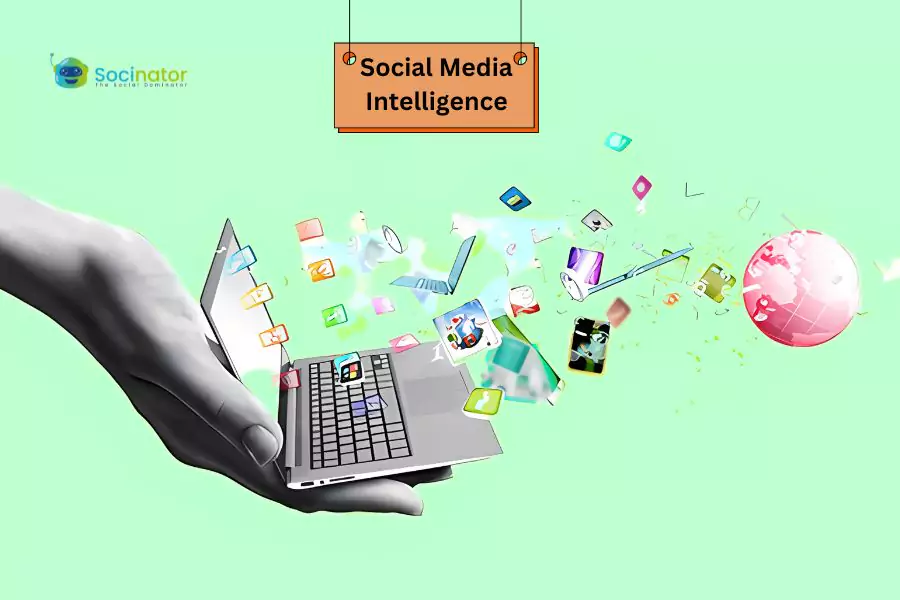In the modern hyper-connected society, digital communication is unstoppable. It only takes one tweet, viral post, or comment by an influencer to change the mood of the people in a matter of minutes, so real-time media monitoring is not a choice anymore, it is a must. To remain relevant, manage crises and take advantage of opportunities as they arise, real-time monitoring combined with social media intelligence is the way forward to brands and organizations that wish to remain ahead.
This is where the strategic advantage of advanced Media Monitoring Services comes in, providing instant access to trends, sentiment, and the discourse of the people across platforms.
What Is Real-Time Media Monitoring?
Real-time media monitoring involves monitoring of digital conversations and contents as they occur. Real-time systems enable brands to operate in the present, before something becomes a crisis or a trend becomes yesterday. Unlike traditional systems of summarizing or reporting on media coverage after the fact, real-time systems enable brands to act in the now.
Through Media Monitoring Platforms, companies can gather, classify, and examine the media content of diverse sources: news sites, blogs, forums and, above all, social media networks.
Enhancing Social Media Intelligence Through Real-Time Monitoring
Social media intelligence is the process of gathering and interpreting information on social media platforms such as Twitter, Facebook, Instagram, Tik Tok, and LinkedIn to learn about the audience, brand sentiment, new trends, and competitor tactics. When this intelligence is used in real-time monitoring, it increases fivefold in five ways:
- Viral Trend or Crisis Detection in real-time
One negative comment or review of a product can spread virally in a few minutes. Real time media monitoring tools identify these surges in traffic, so brands can jump in early, either to salvage a possible PR catastrophe or to hitch a ride on a hot topic.
Companies have access to powerful Media Monitoring Services that alert them when their brand is tagged in viral content, so PR and social teams can create timely responses.
- Real-Time Evolving Sentiment Analysis
It is important to know the emotions of the people. Media Intelligence Services with AI can analyze not only the number of social mentions but also the tone of the mentions, positive, neutral, or negative, providing marketing teams with live sentiment dashboards. This assists in ascertaining the way a campaign is catching on or the manner in which a brand is being taken in during breaking news.
The sentiment analysis is continuously updated on advanced platforms through Natural Language Processing (NLP) so that strategic decisions are made in the most up-to-date emotional context.
- Competitive Benchmarking in Real-Time
Want to know that your competitor product launch is gaining more traction than yours? Or who has more share of voices in a particular area or subject of interest in respect of your brand? You can track performance indicators in real-time via Media Monitoring Platforms, such as engagement, sentiment, and influencer activity, ensuring that you can do so in real-time, when it is still possible to make changes.
This kind of understanding can be applied in making both reactive and proactive adjustment to strategies in such a way that your marketing team does not become a lagger.
- Domestic and Multilingual Surveillance
In the world of digital communications, brands cannot only track the English-speaking media but the discussions in various languages and geographies. The best Media Monitoring Solutions also provide real-time monitoring in multiple languages so that companies can detect regional trends or local crises before they go out of control.
This feature is especially beneficial to multinational corporations that require real-time adaptation of their message to different cultures.
- Better Customer Interaction and Experience
One of the main sources of the customers interested in asking questions, complaints, or praises to a brand is social media. Failure to regard such messages then it is a lost opportunity or worst case a PR risk.
The real-time monitoring of the media ensures that the customer care staff is informed of the mention of the brand, and thus they can respond in a more responsive way in real-time. Not only does this raise the level of customer satisfaction but also trust and loyalty.
The Role of AI in Real-Time Monitoring
The AI in Real-Time Monitoring
The most effective Media Intelligence Services today use AI and machine learning to process huge amounts of data and determine what is most important. Such algorithms are able to:
- Sentiment/engagement flag anomaly
- Forecast the future trends of media using the present figures
- Subject or product line autotagging
- Prescribe crisis prevention or campaign optimization
This is a blend of real-time monitoring and AI that creates a dynamic feedback loop where intelligence is the motor of action, and action is the motor of strategy.
Selecting the Right Media Monitoring Platform
Not every Media Monitoring Platform is as deep or as fast. Some of the features to consider when selecting a tool include:
- Real-time alerts that are customizable
- Cross-channel and multilingual coverage
- Integration of CRM, email, and collaboration
- Trend and sentiment dashboard
- Scalability of the growing data needs
The right solution must not only report on what is happening, but provide your teams with the capability to act on the data in real time.
Conclusion: The New Standard for Social Listening
In 2025 and beyond, social media intelligence that does not provide real-time monitoring is comparable to attempting to drive with the rearview mirror. Knowing what happened is not enough, you have to know what is happening.
Real time media monitoring does not only improve social media intelligence, but it makes it proactive, predictive and strategic. Brands can remain vigilant, responsive, and in tune with the dynamic digital environment with the appropriate tools.









